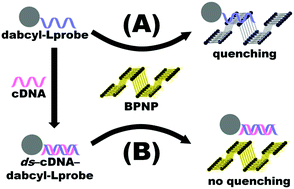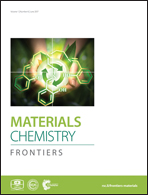Black phosphorus nanoparticles as a novel fluorescent sensing platform for nucleic acid detection
Abstract
Two-dimensional black phosphorus is an emerging material. For the past two years, black phosphorus has attracted the attention of the scientific community due to its promising applications in electronic devices and biosensors. In this work, black phosphorus nanoparticles (BPNPs) derived from a facile, one-step synthesis method were successfully employed as nanofluorophores in the development of a fluorescent sensing platform for DNA detection, for the first time. This detection strategy exploits the differences in affinities of labelled single-stranded and double-stranded DNA oligonucleotides towards spontaneous self-assembly with black phosphorus nanoparticles. A wide linear detection range with good linearity (r = 0.91) spanning from 4 pM to 4000 pM was achieved with the constructed nanosensor, including the ability to distinguish triple nucleotide polymorphism. Moreover, high sensitivity was also demonstrated with a low limit of detection (LOD = 5.9 pM) and limit of quantification (LOQ = 19.7 pM). This paper demonstrates a proof of concept that black phosphorus possesses promising potential for biosensing applications, in particular as DNA nanobiosensors, and the reported findings would be significant in encouraging further research work into the development of biomedical devices and technologies based on black phosphorus.



 Please wait while we load your content...
Please wait while we load your content...